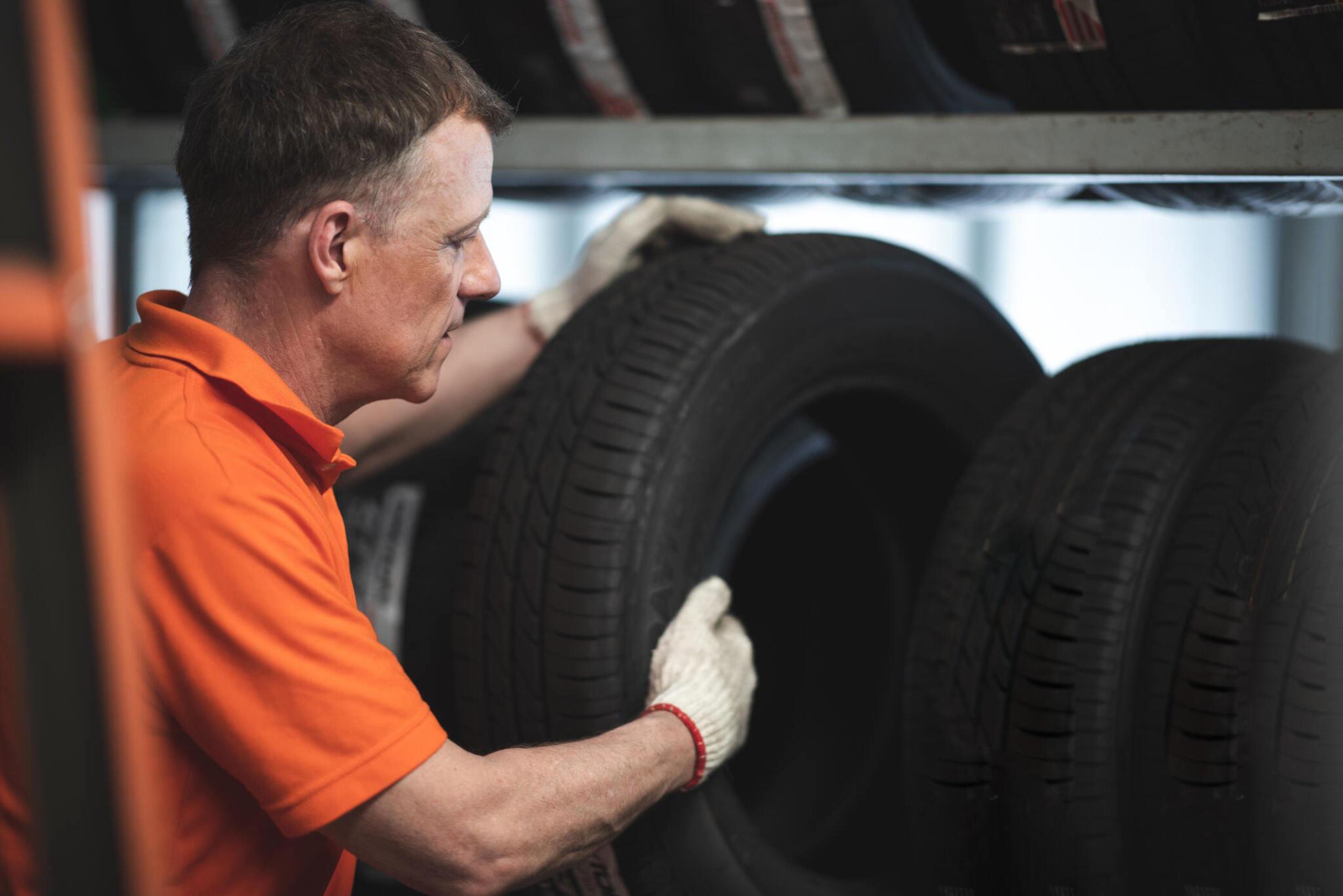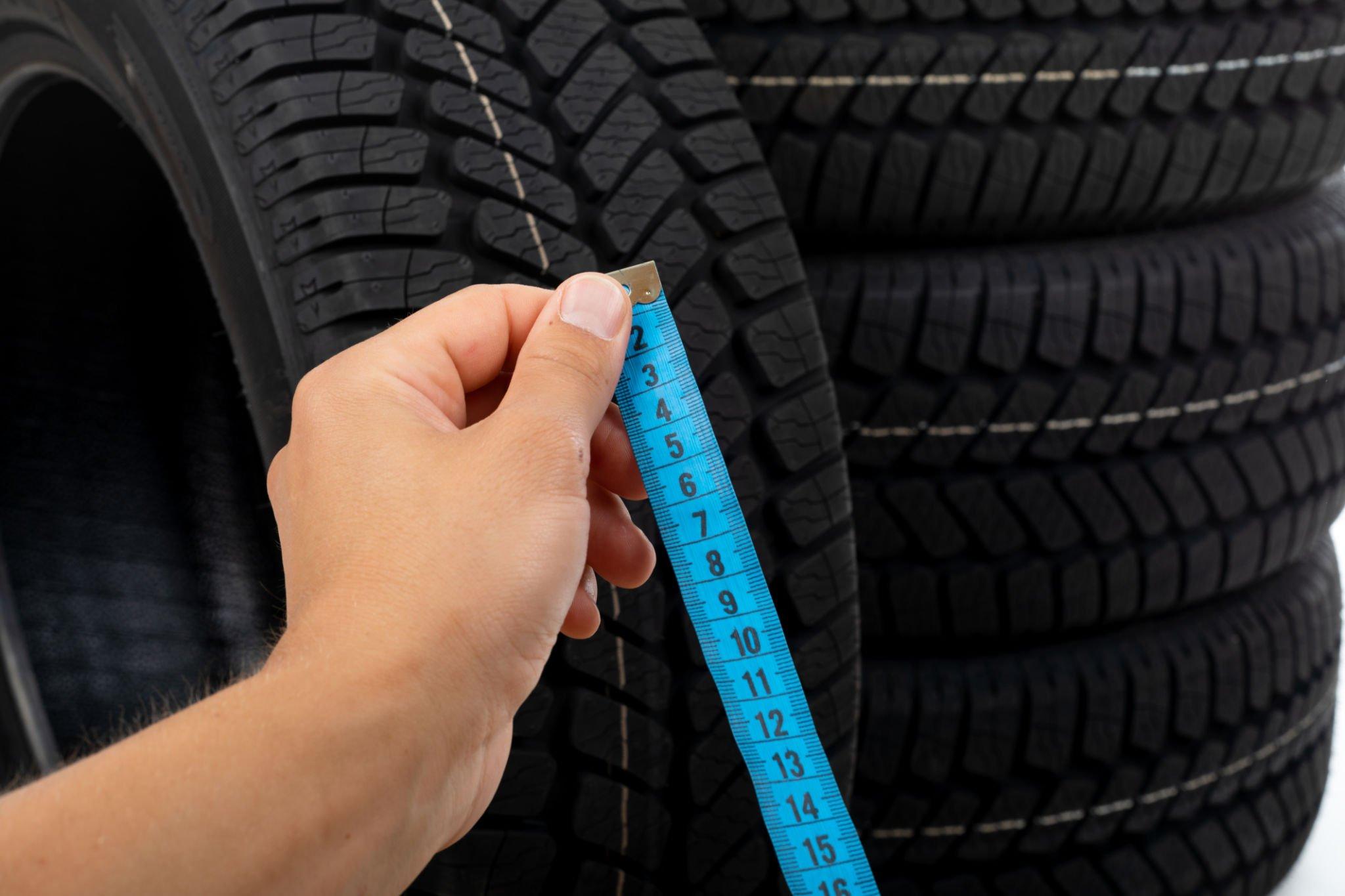Last Updated on April 21, 2024
Should I buy new wheels when I buy new tires?
The symbiotic relationship between tires and wheels is fundamental to any vehicle’s safety, performance, and efficiency. The decision to purchase new tires or wheels, or both, is not to be taken lightly, given their integral role. This guide is designed to steer consumers through the intricate process of understanding when and why they may need to consider buying new tires or wheels, ensuring that their decision is well-informed and beneficial in the long term.
The primary aim of this guide is to serve as an informative resource for vehicle owners contemplating the purchase of new tires, wheels, or both. The decision-making process involves safety considerations, financial implications, and vehicle performance.
Understanding Tires and Wheels
Tires are the only point of contact between the vehicle and the road surface, and they are engineered to provide traction, support the vehicle load, absorb road shocks, and maintain and change the direction of travel. To fulfill these functions effectively, tires must have:
- Proper Tread Depth: Essential for maintaining grip, especially in adverse weather conditions.
- Structural Integrity: Free from cuts, bulges, and other damages that could affect performance or lead to failure.
- Correct Pressure: Ensures optimal contact with the road for better control and fuel efficiency.
Tires are made from a complex blend of materials and rubber compounds that provide durability and flexibility. Over time, tires deteriorate due to wear and environmental factors; hence, understanding their condition and lifespan is crucial for timely replacement.
On the other hand, wheels are rigid circular frames designed to turn on an axle. They support the entire vehicle weight, maintain the tire’s fitment and shape, and transfer power from the axle to the tires.
- Material Composition: Commonly made from steel or alloys, each material offers a balance of strength, weight, and aesthetics.
- Size and Fitment: The tire and vehicle specifications must be matched correctly for proper fitment.
- Condition: Should be free from structural defects like bends, cracks, and severe corrosion, which can affect vehicle safety and tire wear.
Understanding tires and wheels is vital because they work in unison to affect ride quality, handling, acceleration, and braking. Choosing the right combination of tires and wheels is a critical decision that affects the vehicle’s functionality and the driver’s experience.
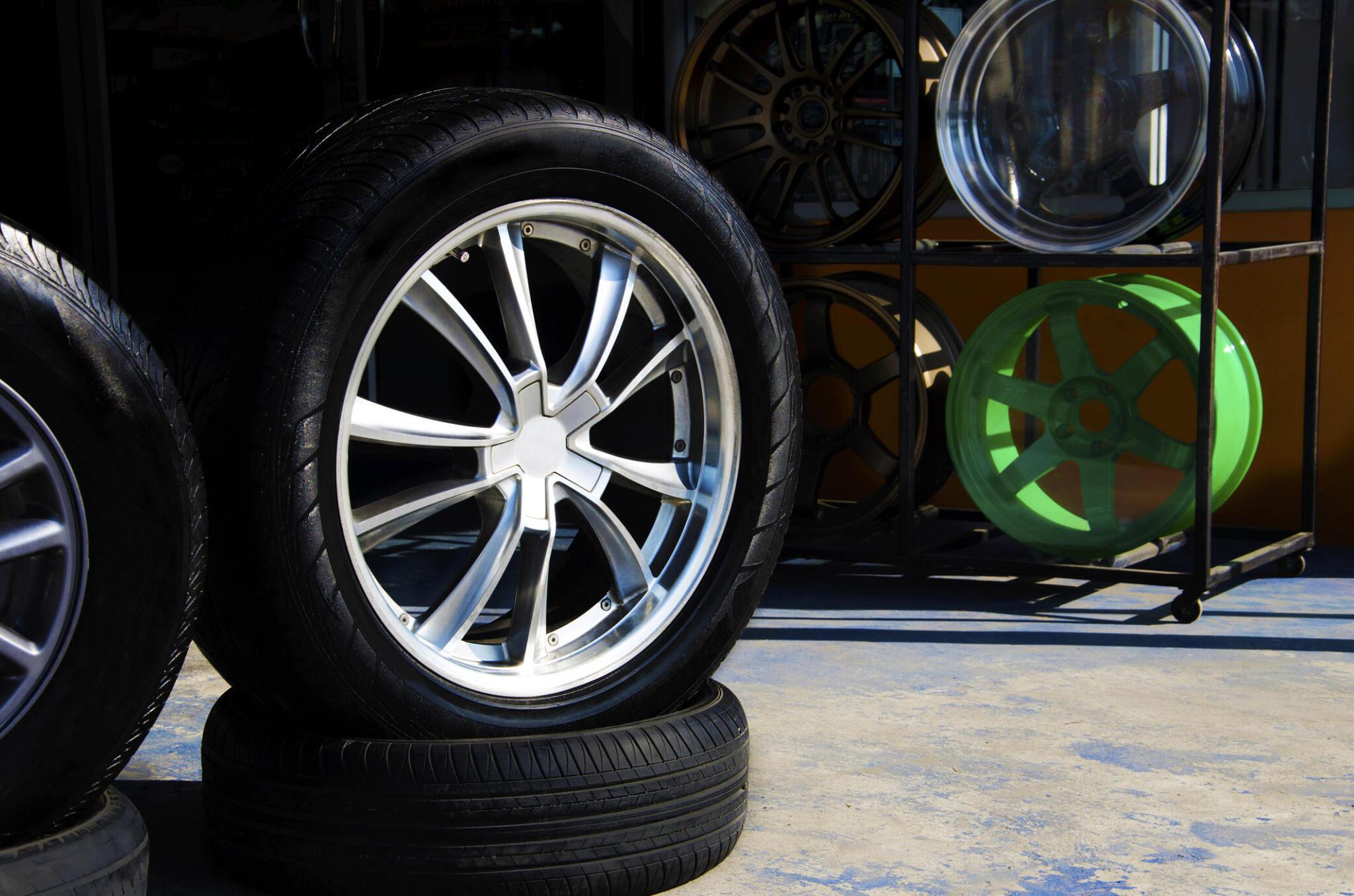
Basics of Wheels and Tires
The foundation of a safe and performing vehicle lies significantly in its wheels and tires. They are the critical contact points with the road, and their condition and compatibility are paramount. Below, we delve into the roles of tires and wheels and the importance of their compatibility.
Role of Tires in Vehicle Safety
Tires are one of the most vital safety features of a vehicle. They serve multiple safety functions:
Traction:
- Surface Contact: Tires maintain contact with the road surface, providing the friction necessary for movement and stopping.
- Tread Design: The tread pattern design affects how well a tire can grip the road, especially in adverse weather conditions.
Pressure and Load:
- Inflation Levels: Maintaining the correct tire pressure is essential for vehicle stability, fuel efficiency, and reducing the risk of tire failure.
- Load Carrying: Tires have a maximum load rating that, if exceeded, can result in excessive wear or blowouts, compromising safety.
Wear and Maintenance:
- Inspections: Frequent inspections can identify issues such as tread wear, sidewall damage, or foreign objects that can lead to tire failure.
- Rotation and Replacement: Regular tire rotation and timely replacement when tread wear indicators are visible are crucial in maintaining tire safety.
Integration with Vehicle Systems:
ABS and Traction Control: Modern tires are designed to work with anti-lock braking systems (ABS) and traction control systems (TCS), enhancing vehicle safety during emergency maneuvers.
Role of Wheels in Vehicle Performance
Wheels are integral to how a vehicle handles and performs on the road:
Material and Structure:
- Weight: The weight of the wheels affects the unsprung mass of the vehicle, influencing handling, acceleration, and braking.
- Strength: The strength and rigidity of a wheel impact its ability to withstand road impacts and maintain its shape and structural integrity.
Heat Dissipation:
- Brake Cooling: Wheels play a role in dissipating heat from the brakes, which is critical during extended braking periods or in high-performance driving conditions.
Size and Dynamics:
- Wheel Dimensions: The size of the wheel affects the type of tire it can accommodate and can influence the vehicle’s overall ride quality and handling characteristics.
- Alignment and Balance: Properly aligned and balanced wheels are essential for smooth driving and even tire wear.
Compatibility between Tires and Wheels
The compatibility between tires and wheels is essential for vehicle performance and safety:
Fitment:
- Proper Mounting: Tires must fit on wheels appropriately — a mismatch can lead to tire damage, air loss, and potentially a blowout.
- Bead Seating: The tire bead must seat correctly on the wheel rim to prevent air leakage and ensure the tire remains attached to the edge under all conditions.
Performance Matching:
- Tire and Wheel Ratings: The speed and load ratings of tires and wheels should match to ensure they can handle the vehicle’s performance capabilities.
- Handling Characteristics: The combination of tire and wheel sizes should complement the vehicle’s designed handling characteristics without negatively affecting stability or steering response.
Safety Standards:
- Regulatory Compliance: Tires and wheels must meet specific safety standards set by transportation authorities, such as the Department of Transportation (DOT) in the United States.
- Manufacturer Specifications: Adhering to the vehicle manufacturer’s tire and wheel size specifications ensures that the vehicle maintains its designed safety and performance levels.
In conclusion, the interplay between tires and wheels is critical to automotive safety and performance. Regular maintenance, adherence to manufacturer specifications, and understanding each component’s role can contribute to a safer and more enjoyable driving experience.
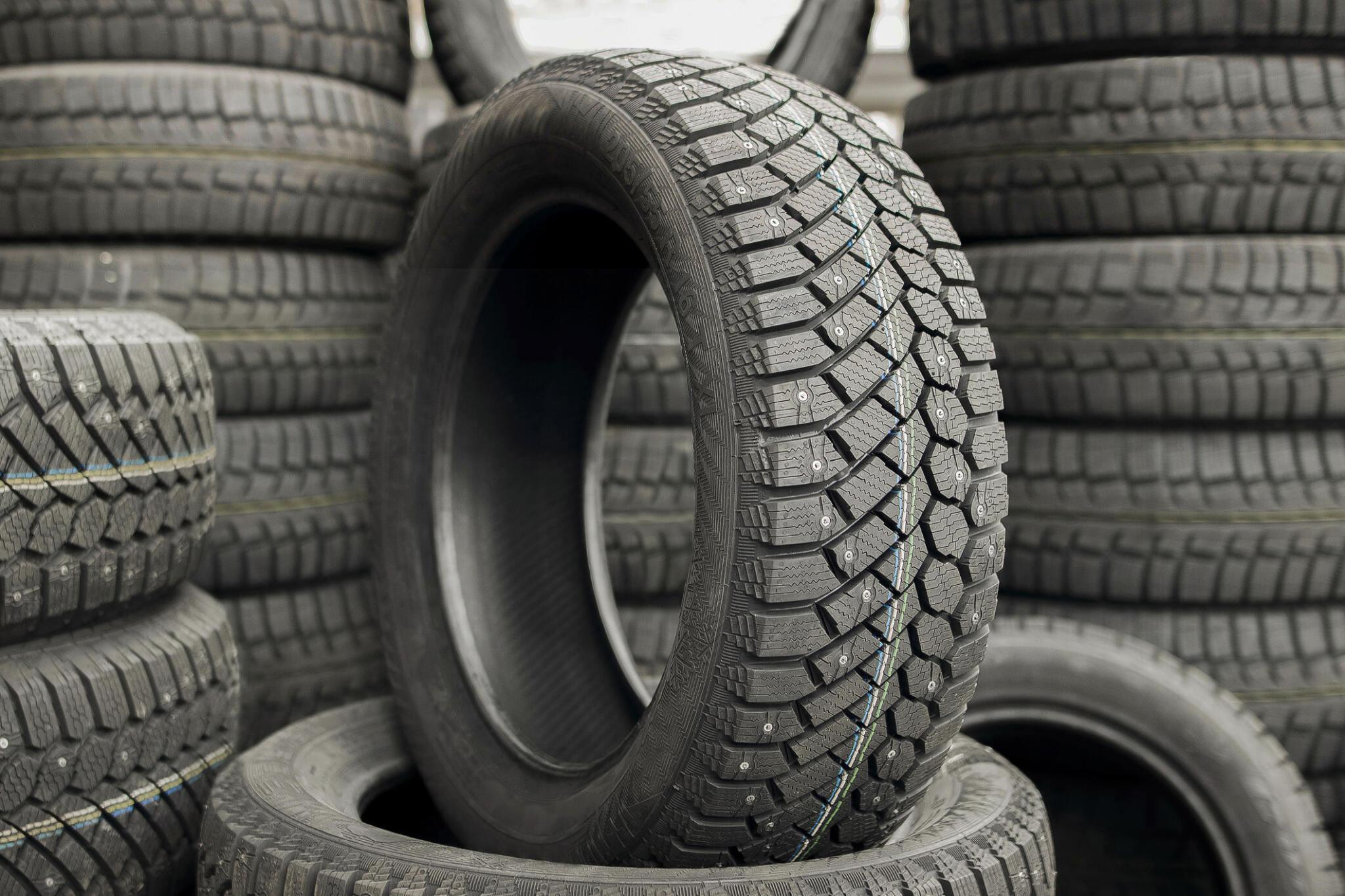
When to Buy New Tires
Deciding to purchase new tires is crucial for maintaining the safety and performance of your vehicle. It is not always apparent when tires should be replaced, but you can make an informed decision by understanding wear patterns, lifespan, and critical indicators.
Recognizing Tire Wear and Tear
Tire wear and tear are expected over the life of a tire, but excessive or uneven wear can indicate problems that need immediate attention:
Types of Wear:
- Even wear: Over time, tires will naturally lose tread depth evenly across the tire surface with proper inflation and alignment.
- Uneven wear: This can be caused by improper inflation, misalignment, or suspension problems. Examples include more wear on the outside or inside edge of the tire or in random patches.
Inspecting Tires:
- Tread Depth: Use a tread depth gauge or the penny test (placing a penny into the tread with Lincoln’s head upside down; if you can see all of Lincoln’s head, it’s time to replace the tire).
- Visual Inspection: Regularly inspect your tires for cuts, bulges, or other damages that can lead to tire failure.
- Impact of Driving Habits:
- Driving Conditions: Frequent driving on rough roads can accelerate wear.
- Driving Style: Aggressive driving, such as hard braking and fast cornering, can cause premature tire wear.
Understanding Tire Lifespan
Several factors influence the lifespan of a tire, which can help you anticipate when replacements might be needed:
Manufacturer’s Guidelines:
- Mileage: Manufacturers typically suggest a range of miles a tire can last, but this is contingent on ideal driving conditions and proper maintenance.
- Age: Tires have a service life recommended to be no more than 6 to 10 years, irrespective of tread depth, due to the aging of rubber compounds, as noted by tire manufacturers and the National Highway Traffic Safety Administration (NHTSA).
Environmental Factors:
- Climate: Extreme temperatures, exposure to sunlight, and environmental ozone can accelerate the aging process of tires.
- Storage: Tires stored improperly or mounted on vehicles that are not driven regularly can suffer from premature aging.
Indicators for Tire Replacement
Knowing when to replace tires can prevent breakdowns or accidents caused by tire failure:
Tread Wear Indicators (TWI):
- Built-In Indicators: Modern tires have tread wear indicator bars built into them, which become flush with the tire tread when it wears down to 2/32 of an inch, indicating a need for replacement.
Performance Issues:
- Handling Problems: If you notice decreased traction, longer stopping distances, or less responsive handling, it may be time for new tires.
- Vibration or Noise: Excessive vibration or increased road noise can signal tire issues that require replacement.
Safety Inspections:
- Legal Requirements: Tires must meet legal safety standards for tread depth, which vary by country and state. For instance, many places require a minimum tread depth of 2/32 of an inch.
Professional Evaluations:
- Regular Check-ups: Have a professional inspect your tires at every service interval or at least once a year.
Following an Incident: After hitting a severe pothole, curb, or debris, check your tires for internal damage that isn’t immediately visible.
In summary, tire maintenance is a critical aspect of vehicle upkeep. Regular inspections, understanding tire lifespan, and being alert to the indicators for tire replacement can guide you in deciding to purchase new tires. Remember, when in doubt, consult a tire professional who can provide expert advice tailored to your specific circumstances and ensure your continued safety.
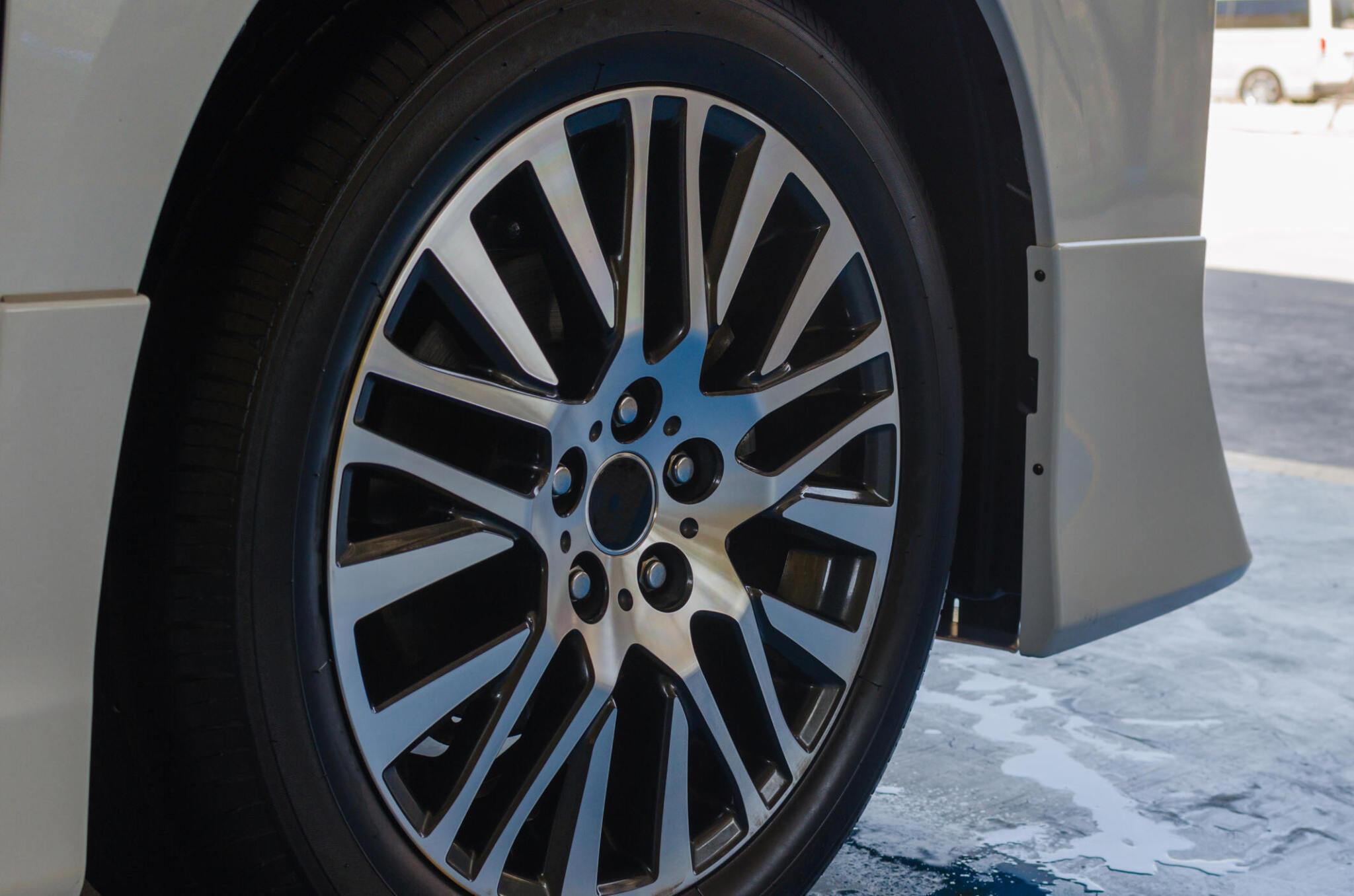
The Necessity of New Wheels
Wheels are a critical component of your vehicle’s safety and performance. While they often last longer than your tires, there are instances when new wheels may be necessary. Understanding when and why to invest in new wheels can help maintain or enhance your driving experience.
Assessing Wheel Condition
The condition of your wheels is a significant factor in the overall health of your vehicle. Proper assessment includes:
Visual Inspection:
Scratches and Scuffs: While minor cosmetic damage is joint, deep scratches can indicate more severe trauma to the wheel.
Rust and Corrosion: On steel wheels, rust can eat away at the metal, while aluminum wheels can corrode, potentially leading to air leaks or structural weakness.
Structural Integrity:
Bends and Dents: Wheels bent or with significant dents may not roll correctly, leading to vibrations and other driving issues.
Cracks: Any crack of any size is a serious concern and can lead to wheel failure. This type of damage requires immediate attention and likely wheel replacement.
Professional Inspection:
Alignment Checks: During routine services, a mechanic can check wheel alignment, which can be off due to bent wheels.
Balance Tests: Imbalance in a wheel can be a sign of internal damage or uneven wear and tear, necessitating professional assessment.
Impact of Damaged Wheels on Safety
Damaged wheels can pose significant safety risks on the road:
Tire Damage:
Air Pressure Loss: A damaged wheel may cause a tire to lose air pressure, potentially leading to a blowout.
Compromised Tire Integrity: Imperfections in the wheel can cause uneven tire wear, weakening the tire and increasing the chance of tire failure.
Vehicle Handling:
Vibration and Instability: A damaged wheel can cause noticeable vibration, interfering with vehicle stability and handling, especially at higher speeds.
Poor Braking: If a wheel is improper, it can lead to poor braking performance, which is critical in emergency-stopping situations.
Risk of Wheel Failure:
Catastrophic Breakdown: A cracked or severely bent wheel can fail while driving, leading to loss of control and potential accidents.
Benefits of Upgrading Wheels
Choosing to upgrade your wheels, even before they are damaged beyond repair, can offer several benefits:
Enhanced Safety:
Strength and Durability: New wheels, especially those made from high-grade materials, can offer increased strength and better durability over time.
Improved Braking: Some wheel upgrades are designed to enhance the heat dissipation around the brakes, leading to more efficient braking.
Better Performance:
Weight Reduction: Lighter wheels can reduce unsprung mass, improving acceleration, handling, and fuel efficiency.
Handling and Ride Quality: Upgrading to wheels better suited to your vehicle can enhance grip, ride comfort, and overall driving dynamics.
Aesthetic Appeal:
Visual Upgrade: New wheels can significantly improve the look of your vehicle, allowing for personalization and increased aesthetic appeal.
Increased Resale Value:
Value Addition: Well-chosen wheel upgrades can increase the resale value of your vehicle, making it more attractive to potential buyers.
In summary, the necessity for new wheels should not be overlooked. Regularly assessing their condition, understanding the potential impacts of damaged wheels on safety, and considering the benefits of upgrading can contribute to a safer and more satisfying driving experience. Whether for performance, safety, or aesthetic reasons, investing in new wheels when needed is a sound decision for any vehicle owner.
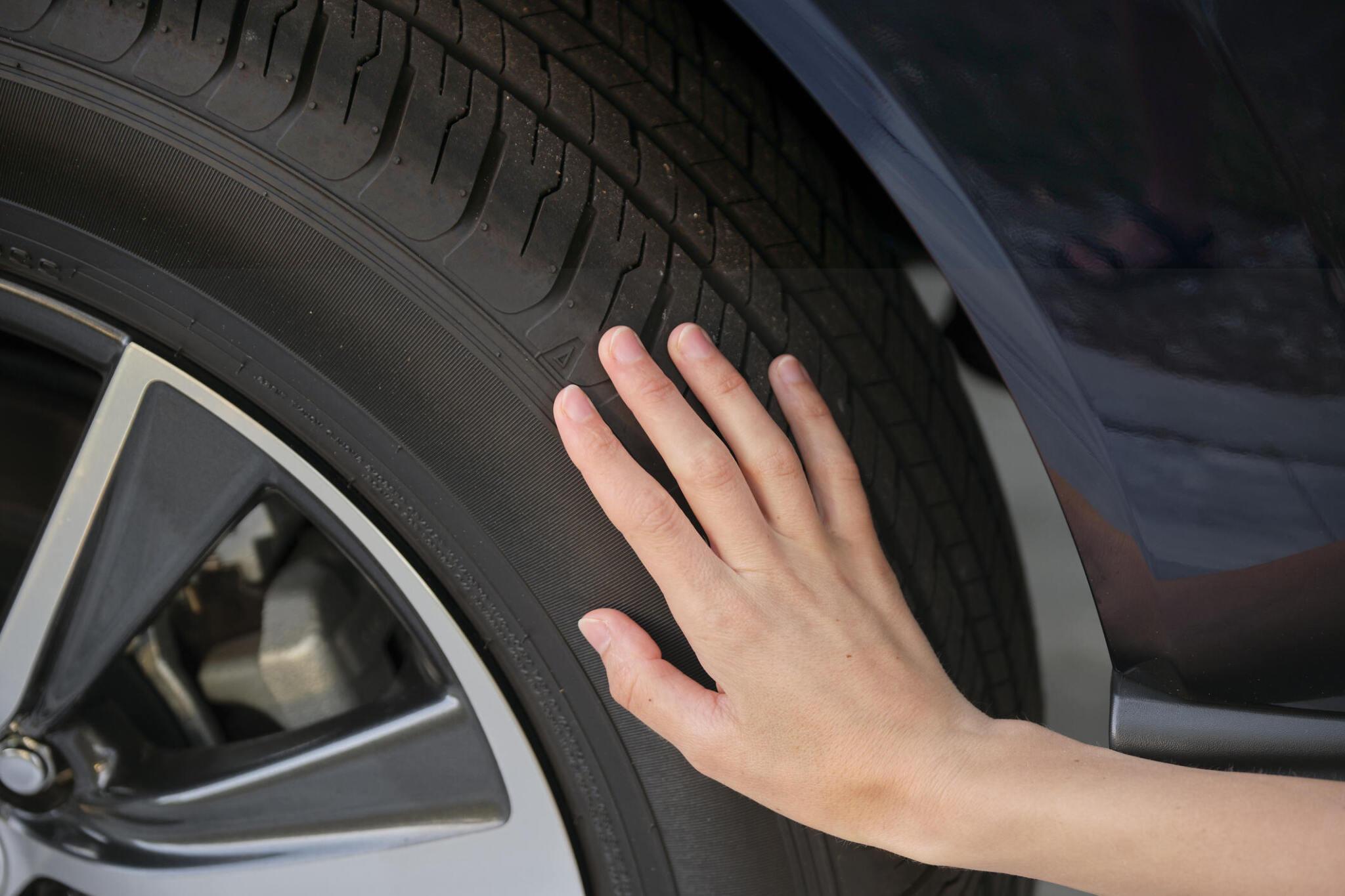
Combining New Tires with New Wheels
When it’s time to replace your vehicle’s tires, it might also be an opportune moment to consider whether you need new wheels. Buying wheels and tires together can have several practical and performance advantages. Let’s explore the benefits and considerations of this combined approach.
Advantages of Purchasing Wheels and Tires Together
There are compelling reasons to buy new wheels when you buy new tires, which include:
Enhanced Performance:
Optimized Compatibility: Matching the right tires with the right wheels ensures they work together optimally, providing the best possible handling and ride quality.
Customization: You can tailor the tire and wheel combination to your driving preferences, whether you prioritize comfort, performance, or efficiency.
Convenience:
One-Stop Shopping: Purchasing tires and wheels simultaneously means they can be mounted and balanced, saving time and simplifying installation.
Bundling Deals: Many retailers offer packages that reduce the overall cost when purchasing wheels and tires together.
Safety:
Reduced Risk of Incompatibility: Buying tires and wheels together eliminates the risk of mismatched sizes and fitment issues that can compromise vehicle safety.
Fresh Equipment: New wheels will not have the wear and potential damage of old wheels, ensuring the new tires perform as intended.
Aesthetics:
Visual Upgrade: New tires and wheels can dramatically improve the appearance of your vehicle, giving it a refreshed and customized look.
Alignment and Balancing Considerations
Proper alignment and balancing are critical when installing new tires and wheels:
Alignment:
Wheel Alignment: New tires should be complemented with a wheel alignment to ensure the tires wear evenly and the vehicle handles correctly.
Suspension Health: A new set of wheels is an opportunity to check the suspension components and ensure everything is in good working order.
Balancing:
Wheel Balancing: New wheels and tires must be balanced to prevent vibrations, which can cause driver fatigue, uneven tire wear, and strain on the vehicle’s suspension.
TPMS Re-calibration: If your vehicle has a Tire Pressure Monitoring System (TPMS), it will likely need to be recalibrated to work correctly with the new wheels and tires.
Longevity of Tires and Wheels:
Maximize Lifespan: Proper alignment and balancing are integral to maximizing the lifespan of the new tires and wheels, ensuring that neither component causes premature wear on the other.
In conclusion, combining the purchase of new tires with new wheels can provide several advantages, from improved performance and safety to aesthetics and convenience. However, to reap these benefits, it is crucial to consider alignment and balancing to ensure that the vehicle maintains its handling characteristics and that the tires deliver their maximum potential life. While it may require a more significant initial investment, the long-term benefits of upgrading both components simultaneously can be a wise decision for many vehicle owners.
Financial Considerations
Financial factors play a significant role in the decision-making process when considering the purchase of new tires, eels, or both. The investment in vehicle maintenance and enhancement can be substantial, so understanding and planning for these expenses is essential for any car owner.
Cost Comparison: New Tires vs. New Wheels
The cost of new tires varies widely based on the type, size, and quality of the tires:
Economy Tires: These can be as affordable as $50-$100 per tire for smaller cars.
Mid-Range Tires: Typically range from $100-$300 per tire for a balance of performance and longevity.
Premium Tires: These may cost upwards of $300 per tire for high-performance or specialty vehicles.
In comparison, new wheels can be a more significant investment:
Essential Steel Wheels May start from $50-$150 each but are typically less popular for aesthetic reasons.
Standard Alloy Wheels: These range from $100 to $500 per wheel, depending on size and design.
High-End or Custom Wheels: These can easily exceed $500 each, with some custom designs and materials reaching the thousands.
Wheels can be a more costly upfront investment than tires, but they don’t need to be replaced as often unless damaged.
Budgeting for Wheels and Tires
To budget effectively for wheels and tires, consider the following strategies:
Regular Savings: Set aside money regularly to create a dedicated vehicle maintenance and upgrades fund.
Maintenance Schedule: Keep track of the expected lifespan of your current tires and wheels and plan purchases around when they will likely need replacement.
Bundling: Sometimes, purchasing tires and wheels together can lead to discounts or bundle pricing, providing savings.
Quality vs. Price: Higher-priced tires and wheels can offer better performance or longevity, which may save money in the long run by reducing the frequency of replacements.
Understanding the Total Cost of Ownership
The total cost of ownership extends beyond the purchase price:
Installation and Services: Factor in the cost of professional mounting, balancing, and alignment services.
Longevity and Durability: More expensive tires and wheels might offer a longer lifespan, reducing the long-term cost.
Fuel Efficiency: Certain tires are designed to improve fuel efficiency, which can save money on gas over the tire’s lifetime.
Resale Value: Quality tires and wheels can maintain the value of your vehicle, potentially leading to a higher resale price.
Lastly, weighing the cost against safety and performance benefits is crucial. Skimping on tires or wheels can compromise safety, which is not financially prudent when considering potential accident-related costs.
In summary, when considering the financial considerations of purchasing new tires or wheels, it is critical to look at both upfront costs and long-term financial implications. Budgeting wisely and understanding the broader picture of the total cost of ownership can help ensure that the investments in your vehicle are both economically sensible and beneficial for its performance and safety.
Selection Process
Selecting the right tires and wheels for your vehicle is a critical process that impacts not only the aesthetics and performance of your car but also its safety and efficiency. Here’s how to navigate the selection process to ensure you make the best choices for your vehicle.
Choosing the Right Tires for Your Vehicle
Selecting the proper tires involves several considerations:
Vehicle Manufacturer Recommendations
Owner’s Manual: Consult the vehicle for tire specifications, including size, type, and load ratings.
Original Equipment Manufacturer (OEM) Standards: Stick to the OEM standards unless you have a specific reason to deviate (like changing driving conditions or upgrading performance).
Driving Conditions
All-Season Tires: Ideal for general use in areas without severe weather patterns.
Winter Tires: Essential for improved traction in regions with heavy snow and ice.
Summer Tires: Offer enhanced performance during warmer months in wet and dry conditions.
Tire Type and Quality
Tread Life: Assess the tread life rating to gauge how long the tires should last.
Reviews and Ratings: Research customer reviews and independent ratings for performance and durability indicators.
Selecting Compatible Wheels
The wheels must not only fit the vehicle but also match the new tires:
Size and Fitment
Bolt Pattern: The wheel must have the correct bolt pattern to fit onto the vehicle.
Offset and Backspacing: Ensure the wheels have the correct offset and backspacing to avoid rubbing against the fenders or suspension.
Material and Quality
Aluminum Alloy vs. Steel: Consider the material properties, such as weight and durability. Alloys are lighter and improve performance, while steel is generally cheaper and more robust.
Certifications: Look for industry certifications or standards that confirm the quality of the wheels.
Performance vs. Aesthetics in Wheel Selection
The choice between performance and aesthetics can be subjective but essential:
Performance Considerations
Weight: Lighter wheels reduce unsprung mass, improving handling and acceleration.
Strength: Stronger wheels can better withstand impacts and rough road conditions.
Aesthetics Considerations
Design: The design of the wheel can significantly alter the vehicle’s appearance.
Finish: Choices range from matte and polished to painted and chrome, each affecting the car’s visual appeal.
Balancing Both
Brands: Some brands specialize in performance wheels that also prioritize aesthetics.
Customization: Custom wheels can offer the best of both worlds but at a higher cost.
In conclusion, selecting the right tires and wheels requires careful consideration of manufacturer recommendations, driving conditions, compatibility, and personal preferences regarding performance and aesthetics. It is a balance between technical specifications for safety and efficiency and the desired look for your vehicle. Prioritizing one aspect does not mean neglecting the other. With the plethora of options available in the market, finding a set that meets all your criteria is possible. It is always recommended to consult a professional to ensure your choice suits your driving habits and conditions.
Installation and Maintenance
Proper installation and regular maintenance of tires and wheels are critical to ensuring their performance and extending their lifespan. This process involves crucial steps that can be performed by professionals or by yourself if you have the right skills and tools.
Professional Installation vs. DIY
When it comes to installation, there are two routes you can take: professional installation or doing it yourself (DIY). Each has its benefits and drawbacks.
Professional Installation
Expertise: Technicians have the training and experience to handle the installation correctly.
Equipment: Professionals use specialized tools that ensure precision, such as torque wrenches and balancing machines.
Time-saving: A professional service can complete the job quickly with less hassle for the vehicle owner.
Warranty: Many service centers offer a guarantee on the installation work.
DIY Installation
Cost-effective: You can save on labor costs by doing it yourself.
Learning: It can be an educational experience and provide more insight into your vehicle’s functions.
Convenience: You can do it independently without scheduling an appointment.
Professional installation is recommended for those without the necessary expertise or tools to avoid potential issues.
Maintenance Tips for Tires and Wheels
Regular maintenance ensures the longevity and performance of your tires and wheels.
Tires
Pressure Checks: Regularly check tire pressure to ensure they are at the levels recommended by the manufacturer.
Rotation: Rotate your tires every 5,000 to 8,000 miles to promote even wear.
Inspection: Inspect tires for any signs of damage, such as cuts, cracks, or bulges.
Tread Depth: Monitor tread depth and ensure it is within legal safety limits to maintain proper traction.
Wheels
Cleaning: Clean wheels with the appropriate cleaners to prevent the buildup of brake dust and grime.
Inspection: Check for any signs of damage, such as cracks or bends, which could lead to tire damage or failure.
Lug Nuts: Ensure lug nuts are torqued to the manufacturer’s specifications after installation.
Longevity Tips for Tires and Wheels
Maximizing the lifespan of your tires and wheels saves money and keeps your vehicle safe.
Tires
Driving Habits: Avoid fast starts, stops, and turns to reduce wear and tear.
Storage: Store tires in a cool, dry place away from sunlight and chemicals if they are not in use.
Weight Management: Avoid overloading your vehicle; excess weight can increase tire wear.
Wheels
Alignment: Keep your vehicle’s wheels aligned to prevent uneven tire wear.
Balancing: Balance the wheels regularly to avoid vibrations and premature tire wear.
Protective Coatings: Use protective coatings on wheels to defend against harsh weather and road chemicals.
By adhering to these installation and maintenance practices, you can significantly enhance the safety and longevity of your tires and wheels. Whether you choose professional services or take on the task yourself, the importance of correct installation and regular maintenance cannot be overstressed. Following the tips above will help maintain optimal driving conditions and potentially prevent costly repairs or replacements.
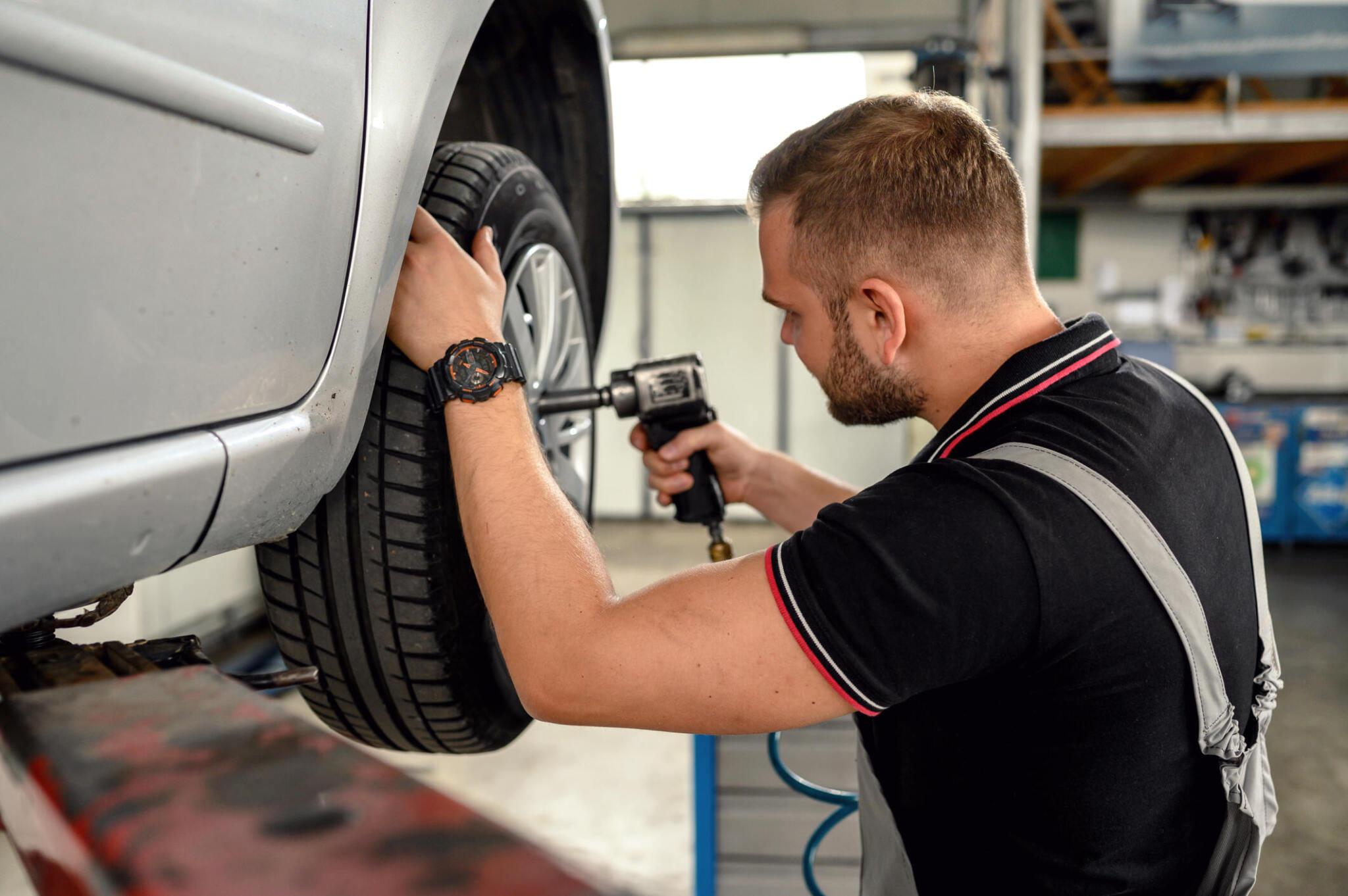
Special Considerations
When purchasing tires and wheels, there are several unique circumstances that vehicle owners must take into account to ensure the best performance and maintain compliance with safety standards and warranties. These special considerations can significantly influence the choice and management of tires and wheels.
Seasonal Tire and Wheel Considerations
Seasonal changes can have a significant impact on driving safety and vehicle performance. Here’s how to approach tire and wheel selection with seasons in mind:
Winter Tires
Tread Patterns: Winter tires have unique tread designs for better grip on snow and ice.
Rubber Compounds: The rubber compounds in winter tires remain flexible in cold temperatures for better traction.
Studded Options: Some winter tires can be studded for additional grip, though usage is restricted in some areas due to road damage concerns.
Summer Tires
Heat Tolerance: Designed to perform in warm weather, they offer better grip and handling on hot pavement.
Performance: These tires are often used for higher-speed driving and have a stiffer construction, which helps with precision.
All-Season Tires
Versatility: They perform satisfactorily in various conditions, from dry to mildly snowy roads.
Convenience: They eliminate the need for seasonal tire changes.
Wheels
Materials: Alloy wheels are susceptible to salt corrosion in winter. Steel wheels, though heavier, might be a more durable choice for harsh winter conditions.
Design: Some wheel designs can trap snow and slush, which could lead to imbalance. Choose methods that allow snow and debris to be cleared quickly.
Performance Vehicles and Specialty Wheels
Performance vehicles, such as sports cars or off-road vehicles, often require specialty tires and wheels:
High-Performance Tires
Speed Ratings: These tires come with speed ratings suitable for high-speed driving.
Sidewall Stiffness: They have stiffer sidewalls for better cornering.
Off-Road Tires
Tread Depth: Deeper treads are necessary for mud, sand, or gravel traction.
Reinforcements: Some off-road tires come with reinforced sidewalls to prevent punctures.
Specialty Wheels
Lightweight Alloys: Performance vehicles benefit from lightweight alloy wheels for better handling and acceleration.
Durability: Off-road vehicles might need wheels that can withstand impacts without cracking.
Aftermarket Wheels and Tires Impact on Warranty
Upgrading to aftermarket wheels and tires can enhance performance and aesthetics, but it may affect your vehicle’s warranty:
Warranty Considerations
Manufacturer’s Warranty: Modifications that deviate from factory specifications can void the warranty if they are linked to a malfunction or damage.
Tire Warranty: Aftermarket tires usually come with their warranty, which may offer different coverage than the OEM (Original Equipment Manufacturer) tires.
Dealer Relationships: Some dealers may be more lenient about aftermarket modifications, mainly if they sell and install them.
Legal and Insurance Implications
Regulatory Compliance: Ensure aftermarket wheels and tires meet all applicable safety standards.
Insurance: Some modifications must be reported to your insurance company to maintain coverage.
In conclusion, when choosing new tires and wheels, consider the environmental conditions you’ll be driving in, the type of vehicle you own, and the potential impact on warranties.
Seasonal tire changes can be a vital safety consideration; performance vehicles require specialized tires and wheels, and aftermarket products can affect your vehicle’s warranty. By considering these special considerations, you can make informed decisions that enhance your driving experience while maintaining safety and legality.
Tire and Wheel Compatibility Charts
Ensuring tire and wheel compatibility is crucial for safety, performance, and maximizing the lifespan of your wheels and tires. Making an informed decision involves understanding the interplay between these two components. Based on the 2023 version of the European Tire and Rim Technical Organization (ETRTO) standards, our chart provides insights into the appropriate tire widths for specific internal rim widths.
Tire / Rim Compatibility Chart:
| Tire Width | Rim Width (Internal) |
| 26, 28 mm | 15 – 23 mm |
| 32 mm / 1.25” | 15 – 25 mm |
| 35 mm | 17 – 27 mm |
| 38 mm | 17 – 27 mm |
| 42 mm / 1.8” | 17 – 28 mm |
| 44 mm | 17 – 28 mm |
| 48 mm / 2.2” | 17 – 30 mm |
| 55 mm | 19 – 30 mm |
Note: For tire pressures exceeding 500 kPa (5 bar / 73 psi), it’s recommended to use rims with hooks.
Conclusion and Recommendations
Deciding whether to purchase new wheels when you buy new tires is not a decision to take lightly. As you’ve learned throughout this guide, both components play crucial roles in your vehicle’s safety, performance, and efficiency.
Evaluating your current wheels’ condition, considering the compatibility with new tires, and understanding how this combination can affect your driving experience is essential. Look beyond the initial cost and consider the long-term benefits and potential savings regarding fuel efficiency, reduced wear and tear, and improved safety.
The Importance of Regular Maintenance
Regular maintenance of both tires and wheels is non-negotiable for prolonging their lifespan and ensuring your safety on the road. This includes routine checks for tire pressure, tread depth, wheel alignment, balancing, and immediate attention to any damages or irregularities. Adhering to a maintenance schedule can prevent minor issues from becoming major and save you money and time in the long run.
- Vehicle Safety: Properly selected and maintained tires and wheels are paramount to vehicle safety.
- Vehicle Performance: The right combination of tires and wheels can significantly enhance your vehicle’s performance.
- Compatibility: Ensuring that your tires and wheels are compatible is essential for the smooth operation of your vehicle.
- Cost-Effectiveness: While initial costs can be significant, the long-term savings from choosing the right tires and wheels can be substantial.
As you conclude this comprehensive guide on buying new wheels with new tires, it’s important to reiterate the necessity of making an informed decision considering immediate needs and future implications. Your choices should align with your vehicle’s requirements, driving conditions, and personal preferences for performance and aesthetics.
When it’s time to make that decision, and you’re looking for quality tires that will fit your needs and budget, look no further than Tires Easy. With a vast selection of tires from trusted brands, you’re sure to find the perfect match for your vehicle. Regular maintenance is critical, and starting with quality products sets a solid foundation for the road ahead.
Ready to invest in your vehicle’s performance and safety?
Explore our extensive range, find detailed information on your choices, and enjoy a hassle-free purchase process. Click the button below to Shop Tires Now and ensure you’re making the best choice for your journey. Your peace of mind is just a few clicks away!
FAQs
Do I need new rims when I get new tires?
Not necessarily. You can reuse the rims as long as they are in good condition and compatible with the new tires. However, if they’re damaged or corrupted, it’s best to replace them.
Can you reuse rims for new tires?
Yes, you can reuse rims for new tires if they’re in good shape and fit the tire specifications. Always ensure they’re checked for damage during the tire replacement process.
What to expect when you get new tires?
When you get new tires, expect improved handling, smoother rides, and enhanced safety. It’s also common to notice a reduction in road noise. Remember to check tire pressure regularly to maintain optimal performance.
Do I need new wheels when I get new tires?
No, you don’t always need new wheels when getting new tires. However, it’s essential to ensure that the existing wheels are in good condition and compatible with the new tires.
Is it okay not to have matching tires?
For optimal safety and performance, it’s recommended to have matching tires. Mismatched tires can lead to uneven wear, poor handling, and potential drivetrain damage.
Do you always need a wheel alignment with new tires?
It’s advisable to get a wheel alignment when installing new tires. This ensures that the tires wear evenly and your vehicle handles appropriately.
Is it okay to change only two tires?
While changing all four tires at once is preferable for uniformity, changing only two is acceptable. Installing the new tires on the rear axle is crucial to prevent skidding or hydroplaning.



